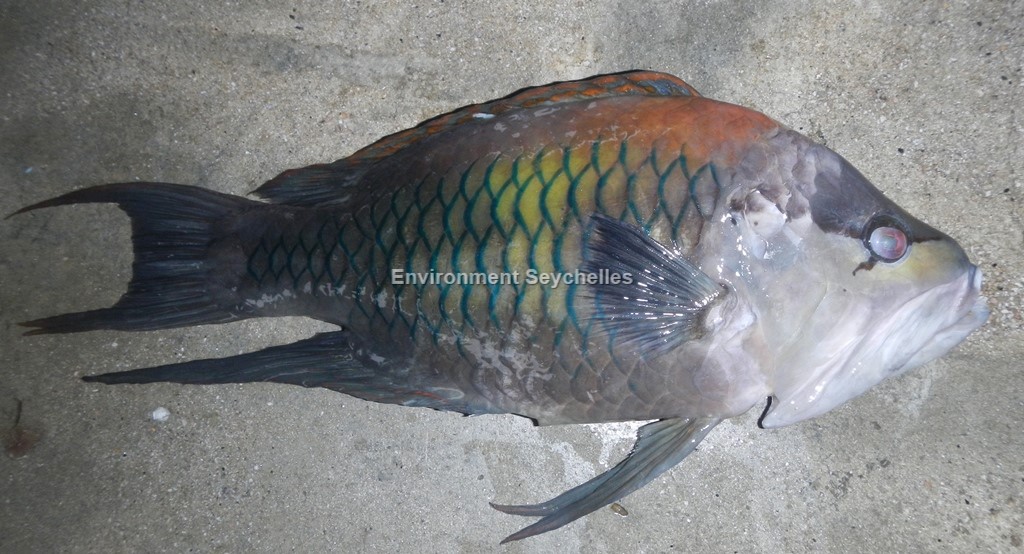Description:
Dorsal spines: 9 -10; Dorsal rays: 9-11; Anal spines: 3; Anal rays: 8-9.
Moderately deep-bodied wrasse, dorsal profile of head convex anterior to dorsal fin, with slight concavity above eye. 2 large canines situated anteriorly in each jaw. Jaws
extremely protrusible, capable of being extended forward more than half the length of the head. The jaws swing forward into a long tube that uses strong suction to catch
prey. Dorsal fin continuous. Pelvic fins filamentous in adults. Caudal fin slightly rounded to truncate with filamentous lobes in adults.
Colour. Varies with age and sex, but adult colour varies additionally, including with an all-yellow xanthic form. Sub adults and females are brown or, not uncommonly,
uniformly yellow. Terminal males are greyish-brown with an orange back, dark scale margins, a yellowish vertical bar on the side, and a pale grey head with a narrow black
stripe through the eye. Small juveniles are brown with thin white bars on the sides and white bars radiating from the eye.
Size:
Maturity: Lm unknown. Range unknown. Max Length: 54 cm SL.
Habitat and Ecology:
Inhabit coral-rich areas of lagoon and seaward reefs commonly at depths of 5-6m (depth range 1-42m). Generally solitary. Feeds mostly on shrimps, crabs and small fishes.
Spawns in harems with male patrolling mating territory. When catching prey, the highly protrusible jaws swing forward into a long tube to suck prey into the mouth.
Fishery Status:
This species is not protected or subject to fishery regulations. It is caught occasionally in the fish trap fishery but more typically in nets that have been dragged on the
substrate, it is usually an uncommon to rare component of the catch.
Notes:
References:
Bray, D.J. (2016). Epibulus insidiator in Fishes of Australia, http://136.154.202.208/home/species/229 (07/03/20).
Froese, R. & D. Pauly. (Eds.) (2019). FishBase. https://www.fishbase.se/summary/5606 (04/06/19).
McGrouther, M. (2019). Slingjaw Wrasse, Epibulus insidiator (Pallas, 1770). Australian Museum. https://australianmuseum.net.au/learn/animals/fishes/slingjaw-wrasse-epibulus-insidiator-pallas-1770/ (07/03/20).
Randall, J.E. (1986). Labridae. p. 683-706. In M.M. Smith and P.C. Heemstra (eds.) Smiths' sea fishes. Springer-Verlag, Berlin.
To, A. et al. (2010). Epibulus insidiator. The IUCN Red List 2010: https://dx.doi.org/10.2305/IUCN.UK.2010-4.RLTS.T187722A8612353.en. (07/03/20).
Citation:
Nevill, J.E.G. (2019). Epibulus insidiator, Slingjaw wrasse. Seychelles Seatizens. www.seatizens.sc. https://seatizens.sc/species/epibulus-insidiator-pallas-1770/ (edited 10/07/22).




There are no comments